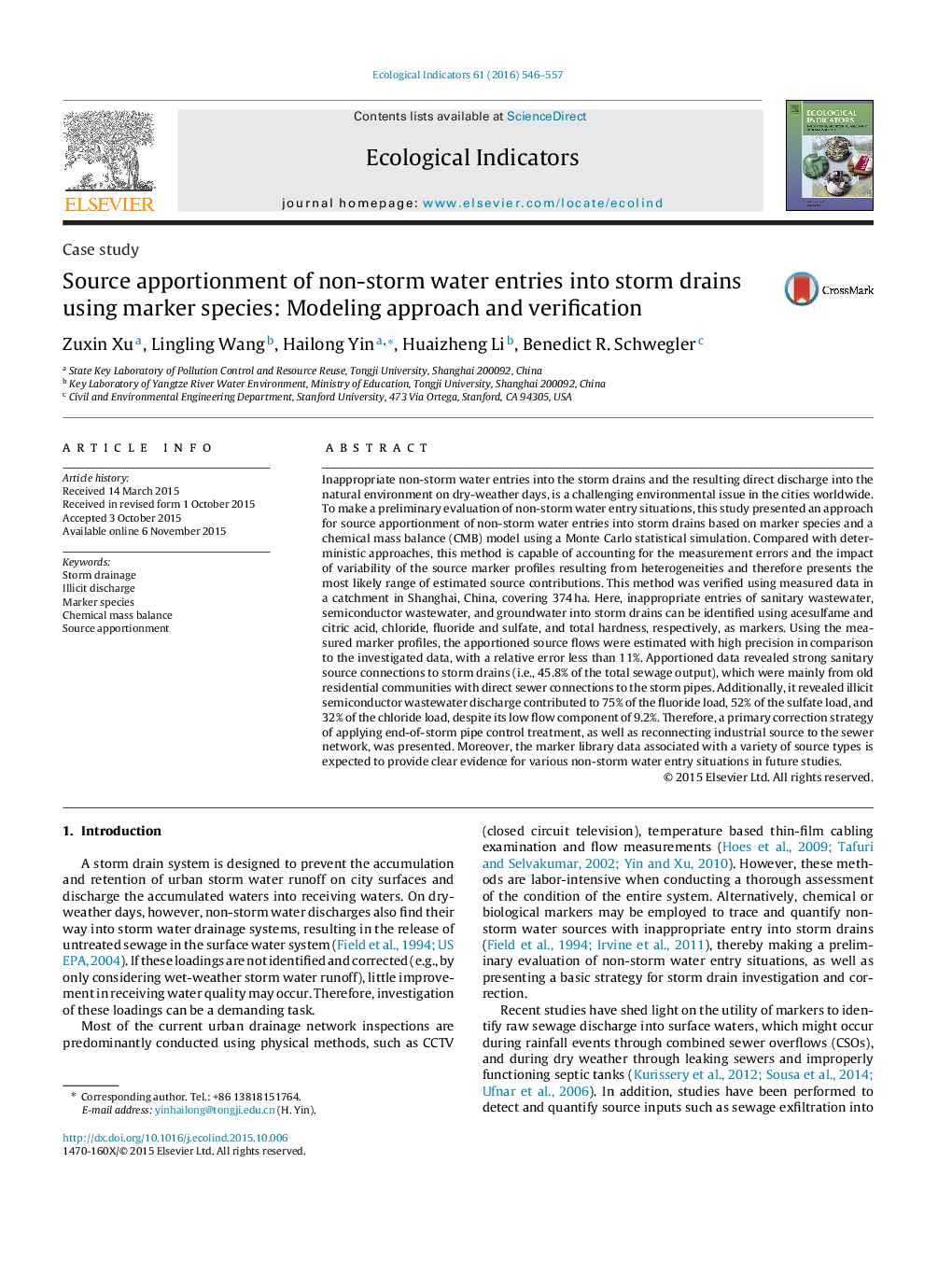| کد مقاله | کد نشریه | سال انتشار | مقاله انگلیسی | نسخه تمام متن |
|---|---|---|---|---|
| 6293652 | 1303105 | 2016 | 12 صفحه PDF | دانلود رایگان |
عنوان انگلیسی مقاله ISI
Source apportionment of non-storm water entries into storm drains using marker species: Modeling approach and verification
ترجمه فارسی عنوان
تقسیم منابع ورودی های غیر طوفان آب به تخلیه های طوفان با استفاده از گونه های مارکر: روش مدل سازی و تایید
دانلود مقاله + سفارش ترجمه
دانلود مقاله ISI انگلیسی
رایگان برای ایرانیان
کلمات کلیدی
زهکشی طوفان تخریب غیرقانونی، گونه های مارکر، توازن توده شیمیایی، تقسیم بندی منبع،
موضوعات مرتبط
علوم زیستی و بیوفناوری
علوم کشاورزی و بیولوژیک
بوم شناسی، تکامل، رفتار و سامانه شناسی
چکیده انگلیسی
Inappropriate non-storm water entries into the storm drains and the resulting direct discharge into the natural environment on dry-weather days, is a challenging environmental issue in the cities worldwide. To make a preliminary evaluation of non-storm water entry situations, this study presented an approach for source apportionment of non-storm water entries into storm drains based on marker species and a chemical mass balance (CMB) model using a Monte Carlo statistical simulation. Compared with deterministic approaches, this method is capable of accounting for the measurement errors and the impact of variability of the source marker profiles resulting from heterogeneities and therefore presents the most likely range of estimated source contributions. This method was verified using measured data in a catchment in Shanghai, China, covering 374Â ha. Here, inappropriate entries of sanitary wastewater, semiconductor wastewater, and groundwater into storm drains can be identified using acesulfame and citric acid, chloride, fluoride and sulfate, and total hardness, respectively, as markers. Using the measured marker profiles, the apportioned source flows were estimated with high precision in comparison to the investigated data, with a relative error less than 11%. Apportioned data revealed strong sanitary source connections to storm drains (i.e., 45.8% of the total sewage output), which were mainly from old residential communities with direct sewer connections to the storm pipes. Additionally, it revealed illicit semiconductor wastewater discharge contributed to 75% of the fluoride load, 52% of the sulfate load, and 32% of the chloride load, despite its low flow component of 9.2%. Therefore, a primary correction strategy of applying end-of-storm pipe control treatment, as well as reconnecting industrial source to the sewer network, was presented. Moreover, the marker library data associated with a variety of source types is expected to provide clear evidence for various non-storm water entry situations in future studies.
ناشر
Database: Elsevier - ScienceDirect (ساینس دایرکت)
Journal: Ecological Indicators - Volume 61, Part 2, February 2016, Pages 546-557
Journal: Ecological Indicators - Volume 61, Part 2, February 2016, Pages 546-557
نویسندگان
Zuxin Xu, Lingling Wang, Hailong Yin, Huaizheng Li, Benedict R. Schwegler,
